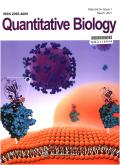Tuning hyperparameters of doublet-detection methods for single-cell RNA sequencing data
IF 1.4
4区 生物学
Q4 MATHEMATICAL & COMPUTATIONAL BIOLOGY
引用次数: 0
Abstract
The existence of doublets in single-cell RNA sequencing (scRNA-seq) data poses a great challenge in downstream data analysis. Computational doublet-detection methods have been developed to remove doublets from scRNA-seq data. Yet, the default hyperparameter settings of those methods may not provide optimal performance. Here, we propose a strategy to tune hyperparameters for a cutting-edge doublet-detection method. We utilize a full factorial design to explore the relationship between hyperparameters and detection accuracy on 16 real scRNA-seq datasets. The optimal hyperparameters are obtained by a response surface model and convex optimization. We show that the optimal hyperparameters provide top performance across scRNA-seq datasets under various biological conditions. Our tuning strategy can be applied to other computational doublet-detection methods. It also offers insights into hyperparameter tuning for broader computational methods in scRNA-seq data analysis.单细胞RNA测序数据双检测方法的超参数调整
单细胞RNA测序(scRNA-seq)数据中双序列的存在对下游数据分析提出了巨大挑战。已经开发了计算双位点检测方法来从scRNA-seq数据中去除双位点。然而,这些方法的默认超参数设置可能不能提供最佳性能。在这里,我们提出了一种调整超参数的策略,用于尖端的双峰检测方法。我们利用全因子设计在16个真实的scRNA-seq数据集上探索超参数与检测准确性之间的关系。通过响应面模型和凸优化得到最优超参数。我们表明,在各种生物条件下,最佳超参数在scRNA-seq数据集中提供了最高的性能。我们的调谐策略可以应用于其他计算二重检测方法。它还为scRNA-seq数据分析中更广泛的计算方法提供了超参数调整的见解。
本文章由计算机程序翻译,如有差异,请以英文原文为准。
求助全文
约1分钟内获得全文
求助全文
来源期刊

Quantitative Biology
MATHEMATICAL & COMPUTATIONAL BIOLOGY-
CiteScore
5.00
自引率
3.20%
发文量
264
期刊介绍:
Quantitative Biology is an interdisciplinary journal that focuses on original research that uses quantitative approaches and technologies to analyze and integrate biological systems, construct and model engineered life systems, and gain a deeper understanding of the life sciences. It aims to provide a platform for not only the analysis but also the integration and construction of biological systems. It is a quarterly journal seeking to provide an inter- and multi-disciplinary forum for a broad blend of peer-reviewed academic papers in order to promote rapid communication and exchange between scientists in the East and the West. The content of Quantitative Biology will mainly focus on the two broad and related areas: ·bioinformatics and computational biology, which focuses on dealing with information technologies and computational methodologies that can efficiently and accurately manipulate –omics data and transform molecular information into biological knowledge. ·systems and synthetic biology, which focuses on complex interactions in biological systems and the emergent functional properties, and on the design and construction of new biological functions and systems. Its goal is to reflect the significant advances made in quantitatively investigating and modeling both natural and engineered life systems at the molecular and higher levels. The journal particularly encourages original papers that link novel theory with cutting-edge experiments, especially in the newly emerging and multi-disciplinary areas of research. The journal also welcomes high-quality reviews and perspective articles.
 求助内容:
求助内容: 应助结果提醒方式:
应助结果提醒方式:


